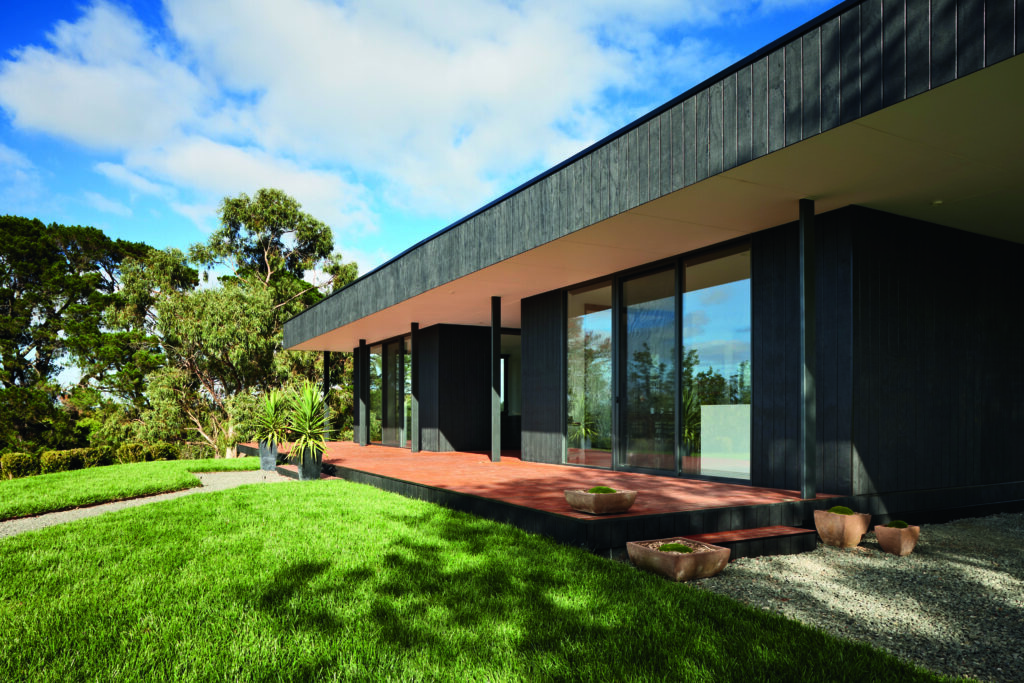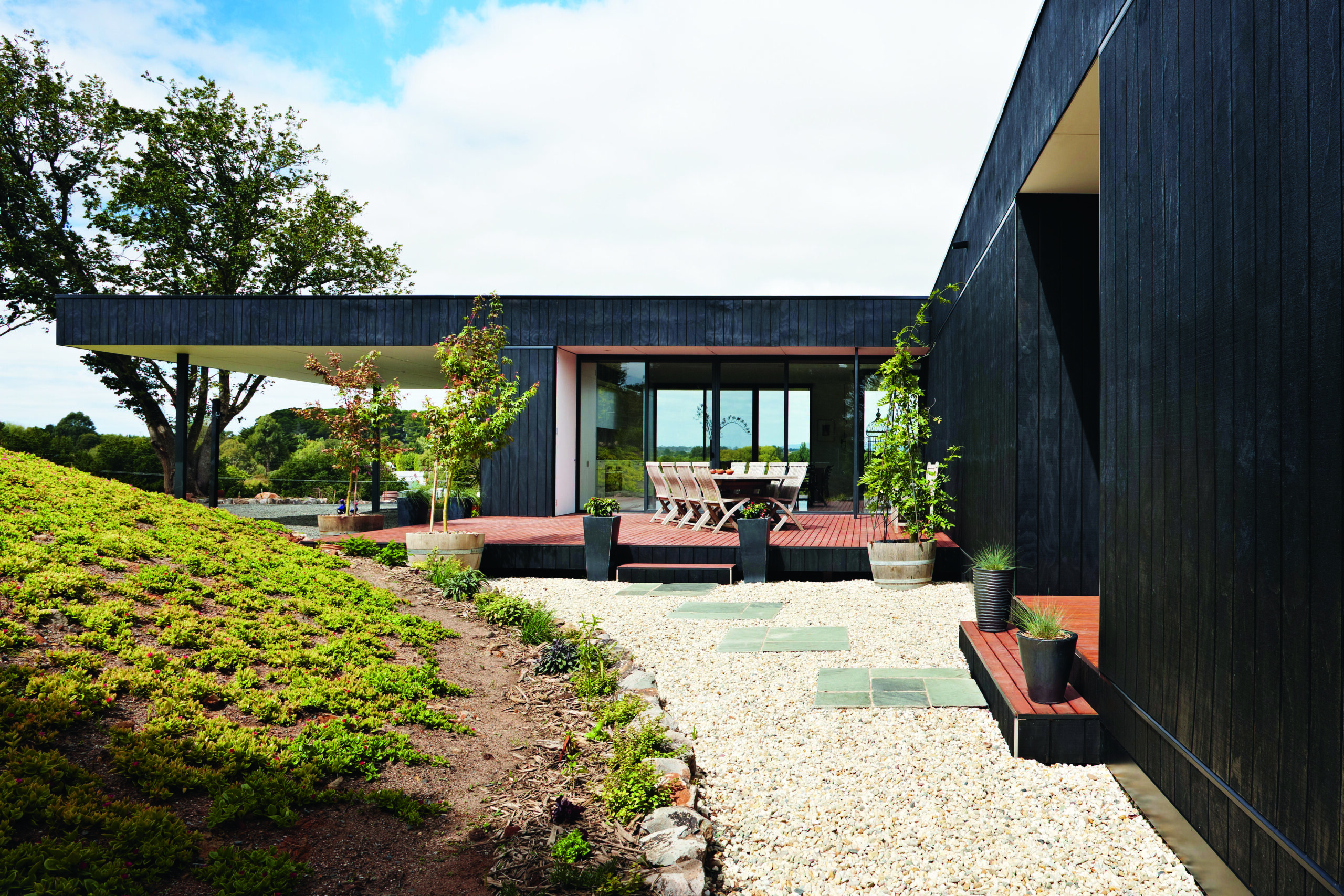Built on time and on Budget, this minimalist architect-designed home by Intermode blurs the line between indoors and out and pays homage to the local environment.
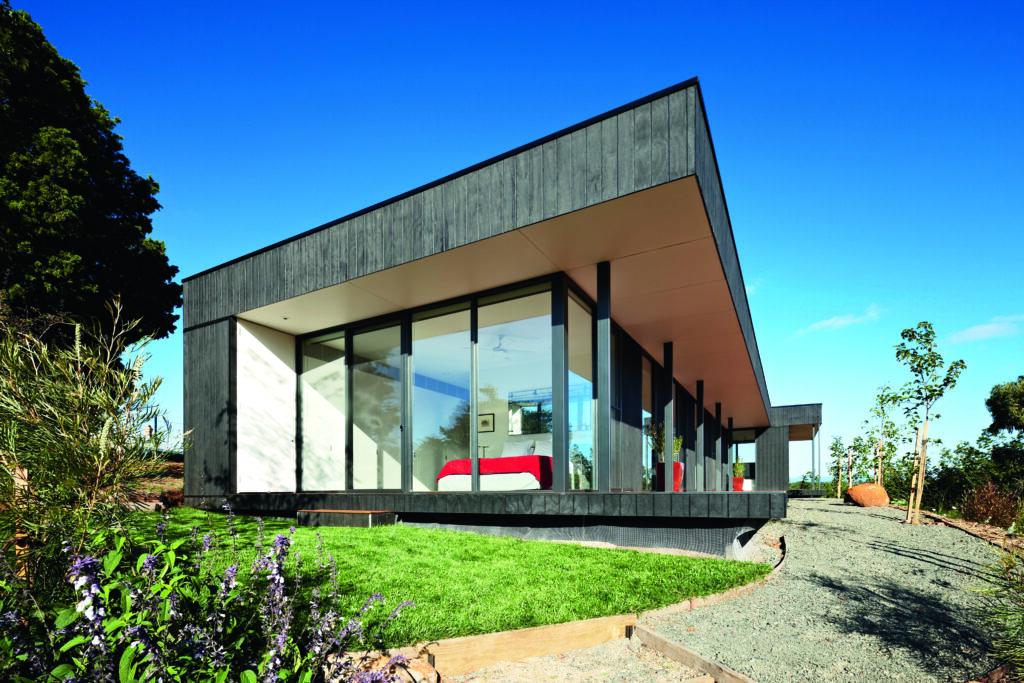
Discovering Kyneton and the Perfect Intermode Home
It was as if serendipity knocked twice for Di Foggo and Rod Moore. The first occasion was their discovery of Kyneton in 2006, a gourmet village in Victoria’s Macedon Ranges district that was on the cusp of its own renaissance, having once thrived during the gold rush days of the 1850s. The second was a cheeky telephone call made by Di to the architect of a local property after the home’s style caught her eye — a conversation that led to the suggestion that Intermode, an architect-designed prefabricated housing solution, might be the right fit for their aspirations.
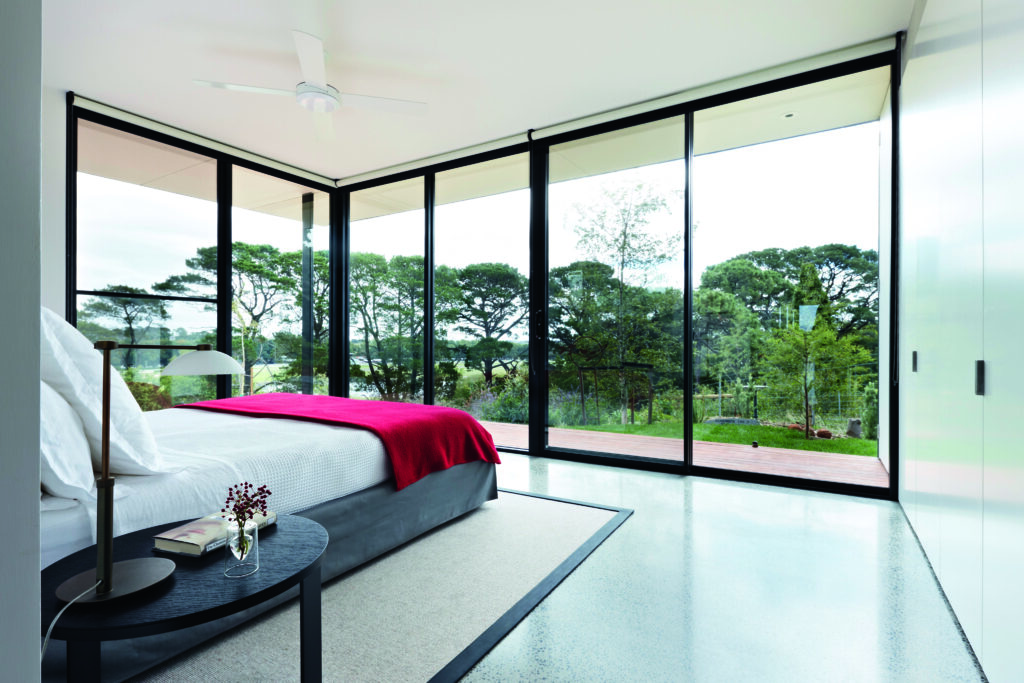
Why Di and Rod Chose Kyneton
Ironically, Di and Rod hadn’t set out in search of a factory-built modular home. That decision emerged after carefully weighing their requirements. They were determined not to repeat the budget blowouts and time delays of their earlier timber property renovation in bayside Melbourne. Their years in an inner-city Docklands apartment — followed by the purchase of a CBD warehouse close to both their workplaces — had shown them the appeal of convenience. When it came time for their next venture, originally conceived as “a weekender,” they decided to look beyond Melbourne.
Kyneton quickly won them over with its strong sense of community, renowned restaurants, and Federation homes. A house with a garden “that needed little refurbishment but had great potential,” as Di recalls, sealed the deal. Soon the couple began winding up their Melbourne commitments and transitioning to a country lifestyle.
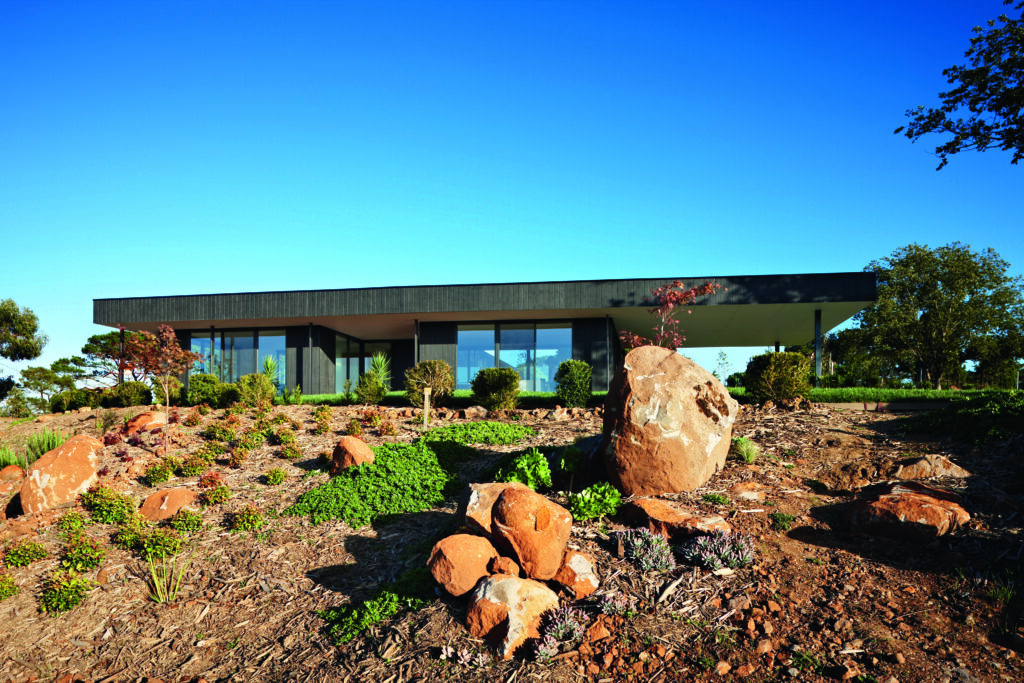
Building a Modern Home with Intermode on Scotsman’s Hill
For Di, a passionate gardener, restoring this period home marked her 29th garden project. But when that was complete, the pair agreed they “needed a new project” — and set their sights on building a modern home that connected indoors with outdoors more fully than historic dwellings allow.
A two-acre block on Scotsman’s Hill, once a bluestone quarry overlooking the Kyneton racecourse, the township, and Mount Macedon, presented itself. In mid-2010, Di and Rod walked into Intermode’s Melbourne office, co-located with the eminent Carr Design Group. “We asked if we could speak to someone about building us a house,” Di laughs. Their dream project had found its team.
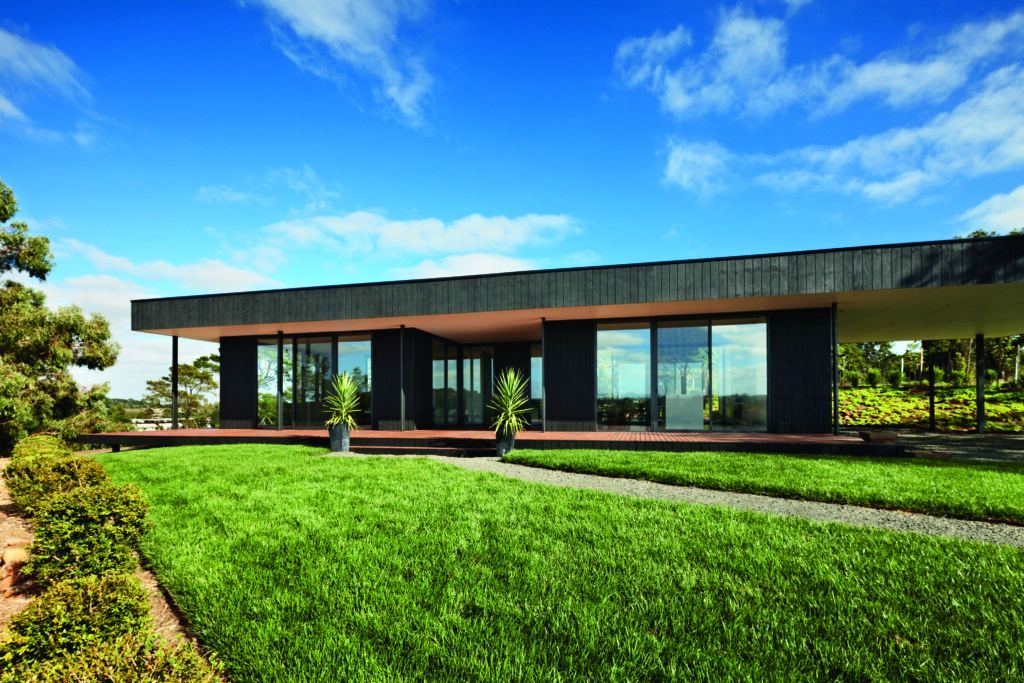
Flexibility and Function
After initial discussions with Intermode director Nick Carr and visits to other Intermode properties, their concerns about “off-the-shelf” kit homes disappeared. “We knew we wanted modern, minimalist design. Having a fixed price was critical, but so was the 20-week time frame,” says Rod. Flexibility in Intermode’s modular approach allowed them to customise the layout: Rod shifted the kitchen to maximise views of the racecourse, added more drawers, an extra oven, and a clean-lined island bench. A defined entrance was also a must.
The result was a T-shaped home offering a choice of spaces on entry: kitchen and dining to the right, a courtyard to the rear, and the lounge to the left. Glazed internal walls separated living areas while maintaining views. Two bedrooms, a study, bathrooms, and the master suite unfolded from a central corridor, with sleek cabinetry concealing storage, laundry, and services.
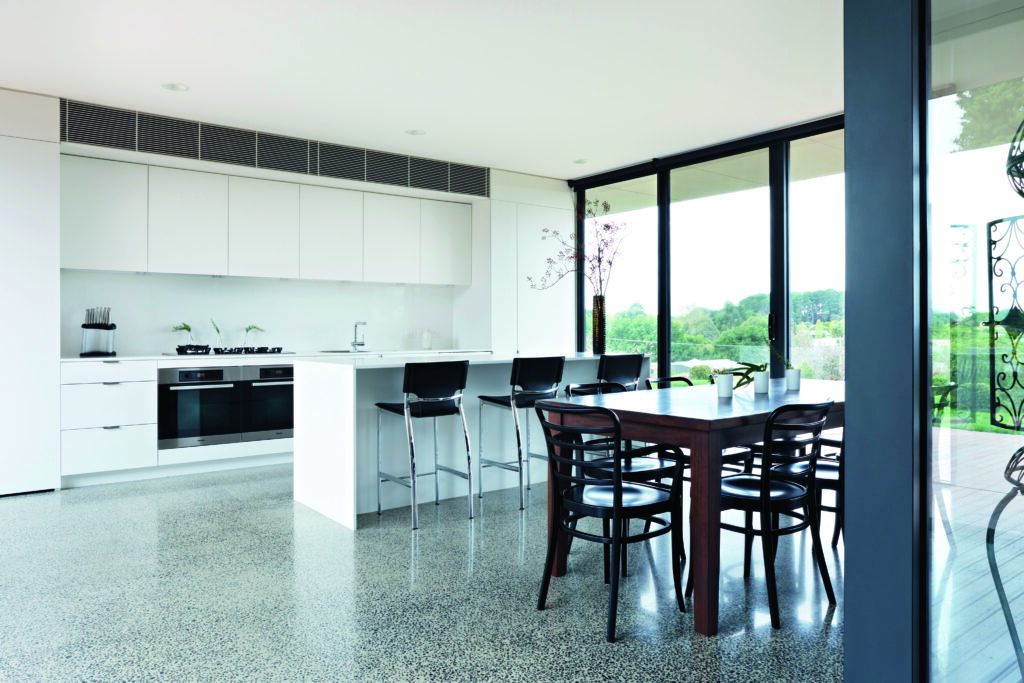
Eco-Friendly and Efficient: How Intermode Delivered on Time and Budget
Sustainability was central to the design. In-floor hydronic heating, a polished-concrete waffle-pod slab with polystyrene insulation, and an Apricus solar hot-water system with gas booster ensured energy efficiency. Full-height doors and double glazing enhanced natural cross-ventilation. Shugg windows reduced the need for artificial cooling, which they’ve only used twice since moving in. Timber decks at doorways created natural cooling effects and easy indoor-outdoor flow.
Intermode’s five-step process provided a detailed manual, mapping out every stage from site preparation in March 2011 to handover in September. Despite unexpected excavation costs from the quarry site, the project was delivered almost exactly on budget and just eight hours over the promised 20 weeks. Compared with a conventional architect-designed build — which they estimated would have cost around $1.5 million — the Intermode approach offered enormous value.
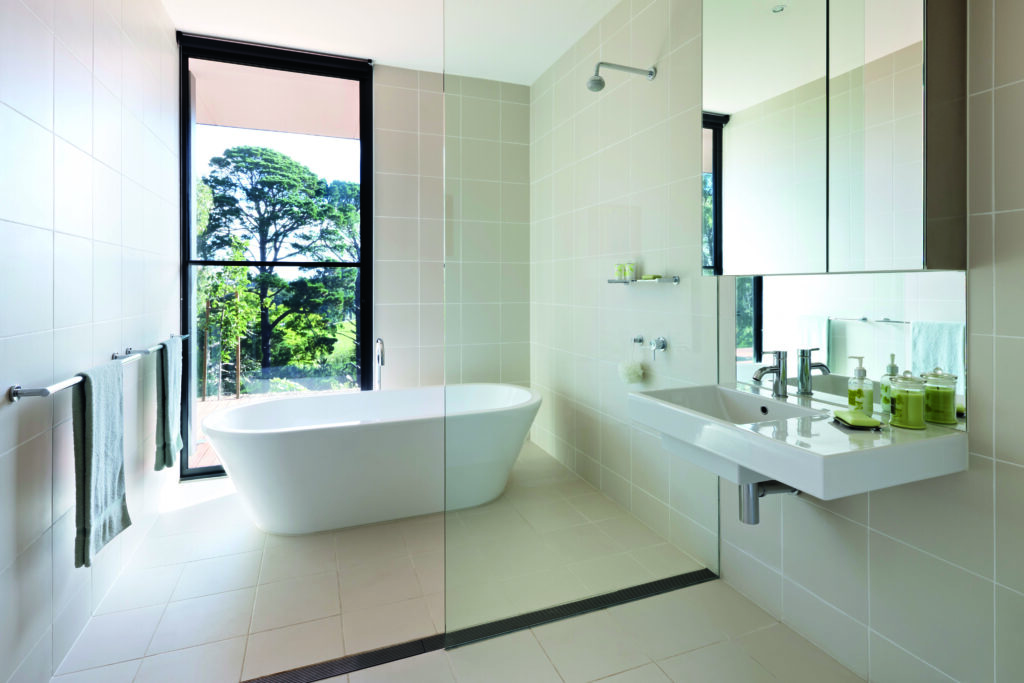
Finishing Touches and a Home That Exceeds Expectations
All fixtures, fittings, joinery, blinds, double-glazing, and premium Miele appliances were included, saving them the overwhelm of endless product selection. Di especially valued the consistent aesthetic assured by Intermode’s collaboration with Carr Design. When the locally sourced timber cladding was stained, the couple finally saw the house take shape. Externally, the bold, linear form contrasted with the rocky site while blending respectfully into the landscape.
For Di and Rod, the finished home exceeded expectations. “I knew it was going to be pretty special living in the landscape,” says Di. Their satisfaction came not only from the design and location but also from the positive relationships with builders, trades, and architects throughout the journey. Today, the expansive garden surrounds the house, helping it blend seamlessly with its environment. A quirky “five-year plan” sign gifted by Rod to Di serves as a gentle reminder that not everything needs to be finished at once.
